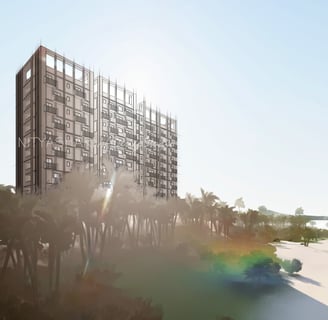The Evolution of Skyscraper Design
The Evolution of Skyscrapper Design
Ar. Nitya Sharma
3/29/20242 min read


The Evolution of Skyscraper Design
The concept of skyscrapers, tall buildings that reach for the sky, has a fascinating history that dates back to the industrial revolution. During this era, advancements in technology, particularly the use of metal and glass in construction, paved the way for the development of taller and more impressive structures. What started as a 9-storey building in the past has now evolved into towering structures that reach heights of up to 828 meters.
The Influence of the Industrial Revolution : The industrial revolution brought about significant changes in various industries, including architecture. The use of metal, particularly steel, revolutionized the construction industry as it offered greater strength and flexibility compared to traditional building materials like wood and stone. This innovation allowed architects to envision and construct taller buildings that were previously unimaginable.
One of the pioneers in the use of metal in skyscraper design was Gustave Eiffel. He is best known for his iconic creation, the Eiffel Tower in Paris. The Eiffel Tower, which was completed in 1889, showcased the potential of metal structures in architecture. Its intricate lattice-like design made entirely of iron revolutionized the concept of tall buildings.
Eiffel's innovative use of metal in the construction of the Eiffel Tower inspired architects around the world to explore new possibilities in skyscraper design. The strength and durability of metal allowed for the creation of taller and more intricate structures, marking a significant milestone in the evolution of skyscrapers.
As the demand for taller buildings increased, architects and engineers sought ways to lower the cost of construction and improve efficiency. Advancements in construction techniques played a crucial role in the evolution of skyscraper design.
One such advancement was the development of reinforced concrete, which offered a cost-effective alternative to steel. The use of reinforced concrete allowed for the construction of taller buildings with greater stability and structural integrity. This breakthrough further pushed the boundaries of skyscraper design, enabling architects to create even more impressive structures.
Another significant advancement was the introduction of curtain wall systems. These systems, which consist of non-structural external walls, provided architects with greater flexibility in terms of design and aesthetics. The use of glass in curtain walls allowed for the creation of visually stunning skyscrapers that reflect the surrounding environment and maximize natural light.
The evolution of skyscraper design is an ongoing process, driven by advancements in technology and the ever-changing needs of society. As architects continue to push the boundaries of what is possible, we can expect to see even more innovative and sustainable skyscrapers in the future.
With the increasing focus on environmental sustainability, future skyscrapers are likely to incorporate green building practices and renewable energy sources. Designs that prioritize energy efficiency, waste reduction, and integration with the natural environment will become more prevalent.
Additionally, advancements in materials science and construction techniques will further revolutionize skyscraper design. Lightweight and ultra-strong materials, such as carbon fiber composites, may replace traditional building materials, enabling the construction of even taller and more resilient structures.
